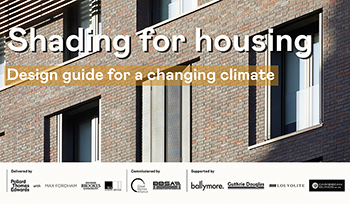Desk
Contents |
[edit] What is a desk?
A desk is a piece of furniture, similar (and sometimes synonymous with) a table, that is typically used in an office or study for tasks such as reading, writing, or using a computer. It usually consists of a flat surface, often with drawers or compartments below for storing supplies or documents, and is typically supported by legs, a pedestal, or a combination. Desks come in various shapes, sizes, and materials, and can be customised for specific needs or preferences.
[edit] The history of desks
The use of desks dates back to early writing surfaces found in ancient Egypt and Mesopotamia. These early desks were typically made from stone or wood and were used for tasks such as record-keeping and writing.
In medieval Europe, desks were typically large and heavy, and were often used for writing and copying manuscripts. During the Renaissance, desks became more ornate and were often decorated with intricate carvings and designs. They were often used by wealthy individuals and were considered a status symbol.
In the 18th and 19th centuries, desks became more functional and were used by a wider range of people. They were typically made from wood and had drawers and compartments for storing papers and writing supplies. With the advent of the Industrial Revolution in the late 19th century, desks became more mass-produced and affordable, and were used in schools, offices, and other settings. In the 20th century, desks evolved to accommodate new technologies such as typewriters, telephones, and computers.
Today, desks come in a wide variety of styles and materials, and are used in homes, schools, offices, and other settings. They continue to be an essential piece of furniture for writing, working, and studying.
[edit] Types of desk
There are many different types of desks, including:
- Computer desk: A desk designed for use with a computer, often with features such as keyboard trays, cable management, and monitor stands.
- Drafting table: A desk with a slanted surface, often used by artists or architects for drawing and drafting.
- Executive desk: A large, formal desk often made of high-quality materials, designed for use by executives or managers.
- L-shaped desk: A desk with two perpendicular surfaces, forming an "L" shape, often used in home offices or larger workspaces.
- Reception desk: A desk used in reception areas or lobbies, often with features such as a counter, storage, and seating.
- Secretary desk: A type of writing desk with a hinged surface that can be closed to hide the workspace and storage.
- Standing desk: A desk that allows the user to work while standing, often adjustable in height to accommodate different users.
- U-shaped desk: A desk with three surfaces, forming a "U" shape, often used in larger office spaces.
- Writing desk: A simple desk with a flat surface and often with drawers, designed for writing or studying.
- Fold-down desk: A desk that can be folded down when not in use, often used in small spaces or for multi-functional rooms.
[edit] What are desks made from?
Desks can be made from a wide variety of materials, depending on the style, budget, design, and intended use:
- Wood is one of the most common materials for desks, as it is durable, versatile, and can be stained or painted to match any decor.
- Metal desks are sturdy and often used in industrial or modern settings. They can be made from materials such as steel, aluminium, or iron.
- Glass desks are more modern and sleek, often used in contemporary or minimalist decor. They can be made from tempered glass for added durability.
- Laminate desks are made from a composite material that is durable and affordable. They can be made to look like wood, metal, or other materials.
- Acrylic desks are lightweight and can be transparent, often used in modern or eclectic decor.
- Leather-topped desks can be elegant and are often used in traditional or executive settings. They can be made from real leather or synthetic materials.
- Stone desks are durable and often used in high-end or luxury settings. They can be made from materials such as marble or granite.
[edit] The future of desks
Possible future developments include:
- Adjustable desks that allow users to switch between sitting and standing positions.
- Desks with built-in technology, such as touchscreens, wireless charging, and voice-activated assistants.
- Desks made from more sustainable materials, such as bamboo or recycled plastic.
- Modular desks that can be easily reconfigured or expanded to accommodate different tasks or changing workspaces.
- With the rise of virtual and remote work, desks may become less of a physical object and more of a digital workspace that can be accessed from anywhere.
- Biophilic desks incorporating natural elements such as plants and natural materials to create a more calming and productive workspace.
[edit] Related articles on Designing Buildings
Featured articles and news
Editor's broadbrush view on forms of electrical heating in context.
The pace of heating change; BSRIA market intelligence
Electric Dreams, Boiler Realities.
New President of ECA announced
Ruth Devine MBE becomes the 112th President of the Electrical Contractors Association.
New CIAT Professional Standards Competency Framework
Supercedes the 2019 Professional Standards Framework from 1 May 2025.
Difficult Sites: Architecture Against the Odds
Free exhibition at the RIBA Architecture Gallery until 31 May.
PPN 021: Payment Spot Checks in Public Sub-Contracts
Published following consultation and influence from ECA.
Designing Buildings reaches 20,000 articles
We take a look back at some of the stranger contributions.
Lessons learned from other industries.
The Buildings of the Malting Industry. Book review.
Conserving places with climate resilience in mind.
Combating burnout.
The 5 elements of seiri, seiton, seiso, seiketsu and shitsuke.
Shading for housing, a design guide
A look back at embedding a new culture of shading.
The Architectural Technology Awards
The AT Awards 2025 are open for entries!
ECA Blueprint for Electrification
The 'mosaic of interconnected challenges' and how to deliver the UK’s Transition to Clean Power.
Grenfell Tower Principal Contractor Award notice
Tower repair and maintenance contractor announced as demolition contractor.
























Comments
[edit] To make a comment about this article, or to suggest changes, click 'Add a comment' above. Separate your comments from any existing comments by inserting a horizontal line.